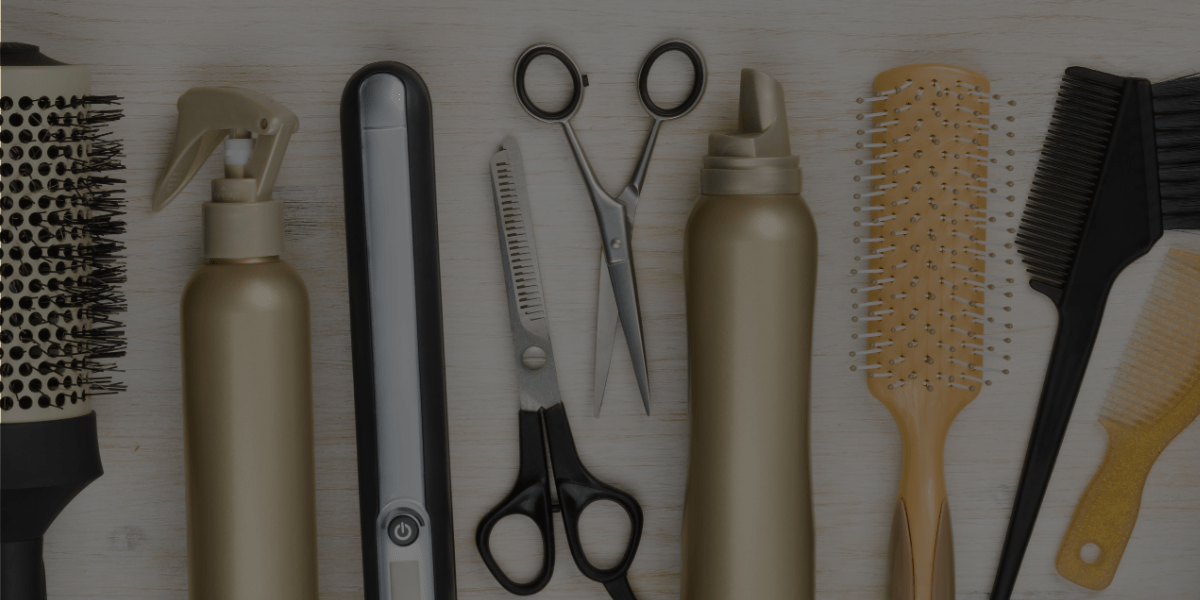As a makeup artist, you may have dabbled with the idea of adding hair-related services to your business (or at least, to your resume). There’s definitely incentive to do this, as it could very likely improve your overall success! But in doing your research, we’re willing to bet you’ve come across the following 2 job terms: hair styling, and hair dressing.
But wait, aren’t they the exact same thing? Actually, no! While they do share certain similarities, they also have fundamental differences. So what does each term mean? How are they similar, and where do they differ? Is one better than the other to add to your makeup business? Let’s find out!
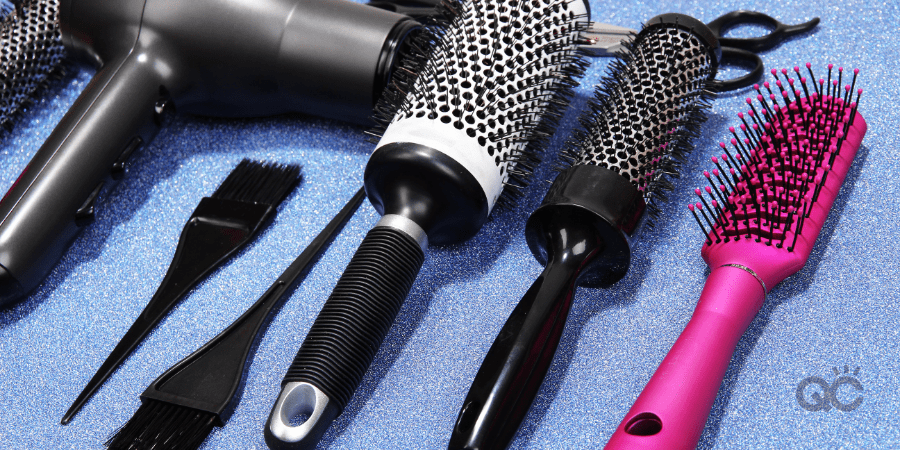
What is hair styling?
The answer is in the name itself: it means to style hair! As a hair stylist, you would help shape the client’s hair into an attractive style of her choosing (or as expertly recommended by you). You’d create things in her hair such as waves, curls, volume, and/or braids. You’d have the skills and training to be able to give your clients all sorts of up-dos, down-dos, and everything in-between. Of course, you’d know how to do all this with the aid of:
- Hot styling tools (tools that specifically use heat), such as a: hair dryer, curling iron, straightener, etc.
- Hair styling products, such as: hairspray, gel, mouse, etc.
- Other styling tools, such as bobby pins, elastics, headbands, hair accessories, etc.
As a hair stylist, you would use your knowledge and understanding of face shapes and structures to recommend flattering styles, up-dos, extensions, etc. to your client. When a client has their heart set on a particular style, it’s your job to deliver it (if possible), to the best of your ability.
To be a working hair stylist, you don’t necessarily need any formal certification. This is due to the fact that nothing you’d be doing to a client’s hair would permanently change it. You wouldn’t be using any harsh chemicals, or altering color or length. Everything you’d do would always be temporary!
That being said, while many hair stylists don’t always need certification, having it will definitely make you stand out from the competition and look better to clients. Plus, if you really want to know what you’re doing, there’s no better way than by taking a hair styling class, being educated, and getting properly trained!
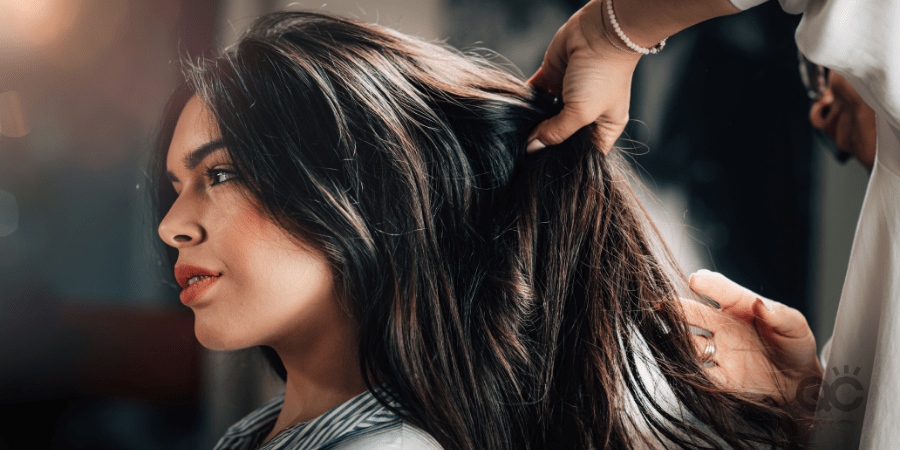
What is hair dressing?
Hair dressing involves everything that a hair stylist does, but more. The defining thing that separate a hair dresser from a stylist is that a hair dresser is qualified to make permanent changes to a client’s hair. This means that they’re allowed to do any of the following to their clients’ hair:
- Cut it
- Bleach and/or dye it (basically give it some type of chemical treatment)
- Install permanent hair extensions
To be VERY clear: a hair dresser is qualified to do these things. A hair stylist is NOT!
Much like a hair stylist, a hair dresser needs to rely on her knowledge of the client’s overall appearance, facial structure, etc. to be able to make the final call on what will suit them best. You can provide suggestions, give caution against bad ideas, and then apply your skills to execute the chosen look as flawlessly as possible.
To work as a professional hair dresser, most places will require you to obtain a cosmetology license in your city, state, or country. In addition to this, there may be a requirement that you’ve completed a certain number of hours of education, training, and practice.
In these locations, to work as a hair dresser without these things would quite literally be illegal. The consequences could be anywhere from a fine, to criminal charges (if, for example, a client were to be injured in some way).
If you’re interested in become a hair dresser, make sure you research the legislation in your area. If required, ensure you get yourself certified accordingly!
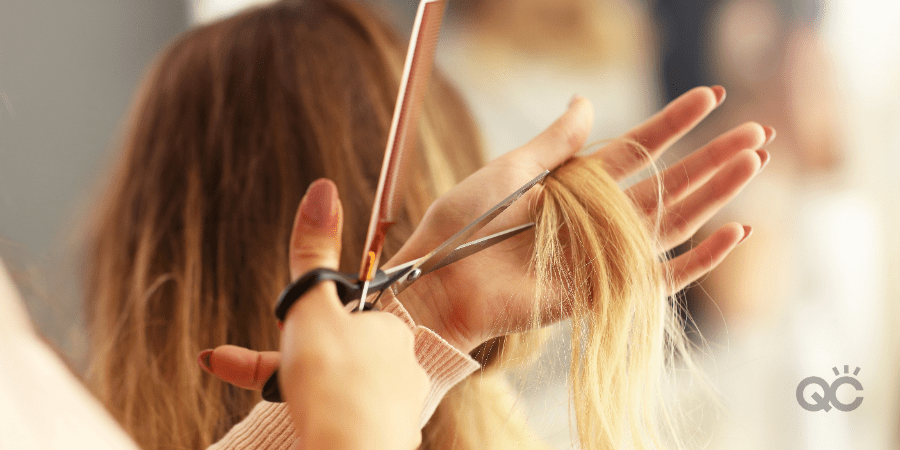
Other Similarities vs. Differences
Of course, we’ve already touched on some of the major things hair styling and hair dressing have in common. We’ve also laid out some pretty huge differences they also have. But here are a couple more to keep in mind…
Potential Income
Because more education, training, and a more extensive skillset is required to be a hair dresser, your income will likely be greater than it would be as a hair stylist. That being said, it also depends on what sort of setting you’re working in.
If you’re employed within a salon as an MUA, you may be able to increase your overall salary due to your additional hair styling qualifications. That being said, those skills may not be required if it already employs hair dressers.
Alternately, if you’re a freelancer, you get to choose how much you charge for your services. If you’re a popular makeup artist with a devoted client base, you may be able to increase your rates with the addition of hair styling services, and make the equivalent of a hair dresser.
People Skills
Both professions definitely have this in common! Whether you’re a hair stylist or a hair dresser, you absolutely HAVE to be good with people. A lot of clients like to make conversation, so introverts will struggle with this type of job.
Plus, your clients would be trusting you with their appearance – that’s a big thing for them to put in your hands. If you don’t at least try to create a positive connection with them, you’ll probably never see them again.
But hey, if you’re already a makeup artist, you know ALL about this already!
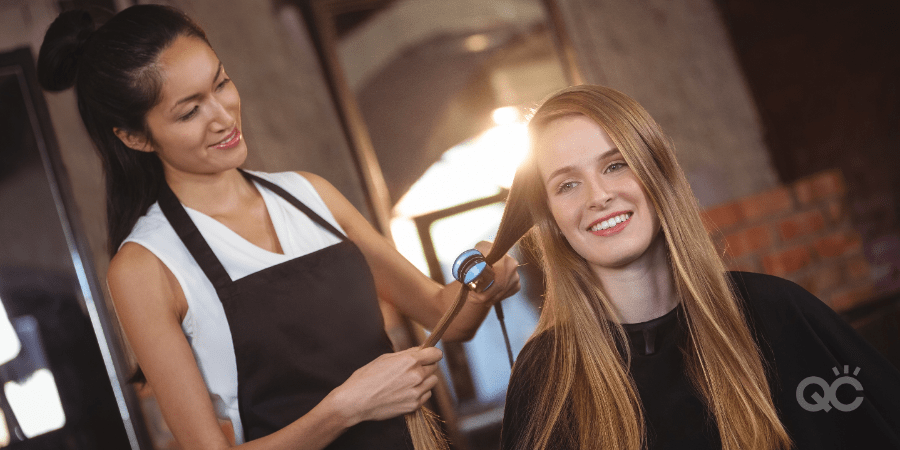
Which would go better with your makeup business?
Hair styling services pair extremely well with makeup services because often times, the client is requiring these services for a specific, important event. She is not as likely to want the full services of a hair dresser (such as needing it cut, colored, etc.) on the day of. Rather, she likely will only need/want it to be styled.
Because of this, the likelihood that she will also like to get her hair styled in addition to getting her makeup done (or vice versa) for this big event is high. Thus, these 2 beauty services have a tendency to go hand-in-hand nicely.
That being said, you can by all means still offer full hair dressing services as part of your makeup business. Though not all of your makeup clients will be as likely to need both services on the same day, that’s not to say it’ll never happen.
One positive is that hair dressing services opens up your clientele to more than just a makeup-related audience. You’ll also become open to clients who may only want hair-related services.
Keep in mind, though, that hair dressing is seen as its own job in-and-of itself. There’s also more equipment involved, so the start-up and maintenance costs will be higher than if you were just hair styling alone.
There’s also the potential issue of time management. It might be hard to balance being a makeup artist and a hair dresser. If you want to first and foremost be an MUA, your hair dressing services may need to take a step (or two, or three) back, in terms of your business priorities.
So while technically, there’s absolutely nothing stopping you from adding both types of services to your makeup business, hair styling services tend to mesh a little better. It’ll cost you less to maintain within your business, and won’t be as big of a timely commitment for you to try and juggle.
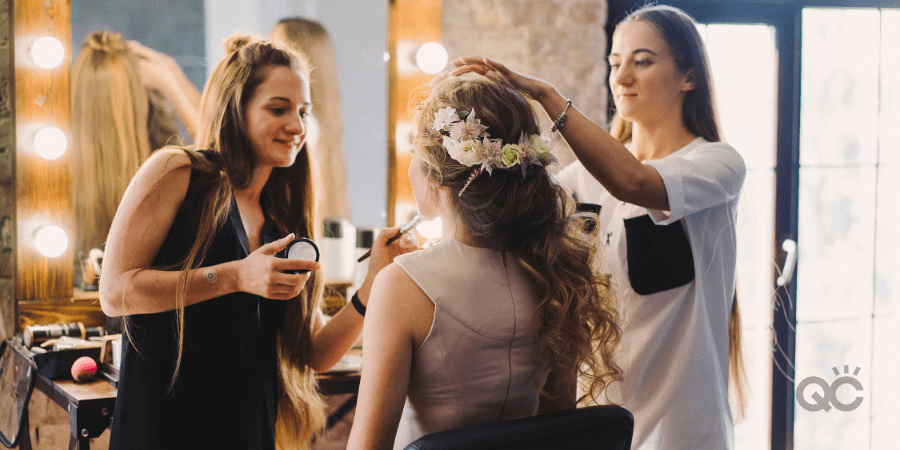
It’s ultimately your choice when it comes to picking the career path that’s best suited for you and your goals. Go with your gut, and don’t let anything stop you! As long as you properly prepare yourself, do all the needed research, and then put your all into it, your career ahead will be a long and successful one!
